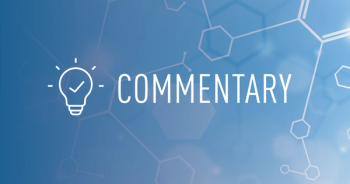
The American Journal of Managed Care
- Special Issue: Health Information Technology - Guest Editor: Farzad Mostashari, MD, ScM
- Volume 19
- Issue SP 10
Older Adult Consumers' Attitudes and Preferences on Electronic Patient-Physician Messaging
A randomized controlled trial was conducted to assess whether adding a peer testimonial to a mailing increases conversion rates from brand name prescription medications to lower-cost equivalents.
Objective: To evaluate and compare the attitudes and preferences of younger and older adults regarding health information exchange with providers, and identify barriers and limitations to meaningful use.
Study Design: Cross-sectional study.
Methods: Qualitative and quantitative data gathered from online surveys of younger and older adult patients enrolled in a freestanding, Internetbased patient-physician messaging system that requires an individual account. This messaging system is only a secure messaging center, and does not allow for direct access to personal medical records.
Results: Data were collected from 324 patients (or proxy users) who reported their age, with 55.2% of respondents under the age of 65 years (mean age 48.2 years) and 44.8% of respondents 65 years or older (mean age 74.9 years). Family and non-family caregivers (proxy users) (mean age 59.2 years) comprised 21.0% of respondents. Overall, 83.9% of all respondents preferred to communicate with the provider via e-mail, and 84.5% of users found the messaging system easy to use, with a majority utilizing the messaging system to communicate about health questions and/or medication requests. Finally, 83% of user respondents were satisfied with the messaging system. Results highlight several areas where improvement is needed to increase patient use and satisfaction including adequate patient education, user-friendly interface, and provider engagement. No significant differences between the younger and older adult populations were found.
Conclusion: Although a majority of enrolled older adult patients have positive attitudes about health information exchange, electronic communication platforms must address key issues in consumer education, physician commitment, and adoption of an accessible interface to ensure productive older adult consumer participation.
Am J Manag Care. 2013;19(11 Spec No. 10):eSP7-eSP11A survey of older and younger adult end users of a patient-physician messaging system did not find any differences in their attitudes or preferences. These findings may support robust integration of comprehensive electronic health information exchange systems, which may lead to positive health outcomes as well as decreased costs.
- Positive attitudes on patient-physician messaging system may be improved by addressing key preferences, such as physician engagement and user-friendly interface.
- Future implementation of electronic health information exchange platforms may not need to be tailored for any specific age group of end users.
As the Health Information Technology for Economic and Clinical Health (HITECH) Act enters stage 2 of implementation,1 providers must be cognizant of patient attitudes toward health information exchange (HIE) while optimizing their electronic health record (EHR) systems. The crux of health information technology (HIT) integration lies in the ability to improve and enhance the providers’ delivery of care, as well as positive patient outcomes, through meaningful use. According to the Centers for Medicare & Medicaid Services (CMS), benefits of meaningful use must include: complete and accurate information, better access to information, and patient empowerment.1 Health information technology literature has repeatedly shown quality and efficiency benefits with successful implementation of EHR systems into capable healthcare systems. These benefits include increased adherence to guidelines, enhanced disease surveillance, and decreased medication errors.2 EHR systems have demonstrated tremendous promise in improving healthcare delivery efficiency and quality, cost-effectiveness, and patient safety at benchmark institutions such as Regenstrief Institute (Indianapolis, IN), Partners/Brigham and Women’s Hospital (Boston, MA), Intermountain Health (Salt Lake City, UT), Vanderbilt University (Nashville, TN), and Kaiser Permanente Health Care System.3
Lacking, however, is adequate health services research regarding the attitudes and preferences of older patients as compared with younger patients with respect to electronic communication with their providers. Such research is important, especially with our aging population and the cost of providing care for this population. As of 2011, more than 1 in every 8 Americans (13.3% of the population) is 65 years or older and, by 2040, there will be about 79.7 million older adults (21% of the population).4 The increase in prevalence of chronic comorbidities among the older adult population affords the opportunity for electronic health information exchange platforms to improve health outcomes through patient engagement. Given current patient trends toward consolidation into large healthcare organizations, comprehensive EHR systems can scale effective management of large populations. A comprehensive EHR system is composed of 2 essential components: (1) the provider network, allowing for storage/retrieval of patient medical records as well as communication between providers, and (2) the patient web portal (PWP), allowing patients (andproxy users) to access certain health records as well as communicate with the medical care team through various functions.
Both components work in unison to enhance healthcare delivery with secure and reliable medical record management, efficient interdepartmental communication, and interactive patient-centered care.
We surveyed older and younger adults who enrolled in a simple, secure patient-physician messaging system, to better understand attitudes and preferences regarding electronic communication with providers. Between April 2010 and January 2012, 46 primary care physicians at UCLA’s Geriatrics and Internal Medicine ambulatory practices, along with their medical care teams, enrolled 3543 patients and exchanged 13,259 messages between them. This study surveyed patients and/or their proxies enrolled in this program to identify end user attitudes, concerns, and preferences and inform the development of a more comprehensive PWP.
METHODSPatient-Physician Messaging System
Vision Tree is a secure, freestanding, Internet-based 2-way messaging system that allows patients and caregivers to communicate with the medical care team. Patients (or proxy users) do not have direct access to their personal medical records, but can be sent personal medical information through electronic messages. In the pilot program, interested patients were e-mailed a message containing log-in information and instructions on account setup. Once the account has been set up, the account user is directed to the messaging site landing page, where one can compose and send new messages and receive and review messages from the medical care team.
Messages are addressed to the provider and triaged by assigned medical staff during regular clinic hours. During triage, medical staff answer messages that are within their scope of work (eg, appointment scheduling, referrals, and authorizations) or forward, via encrypted e-mail, questions that require the physician’s attention. The physician may then call the patient or reply to the medical staff’s e-mail with a response. The medical staff transfers the physician’s response to the Vision Tree messaging system and sends the message to the patient. Once the office’s response is sent, an alert notification arrives at the patient’s e-mail address instructing him or her to log in to Vision Tree to view the new message.
Recruitment
On January 30, 2012, surveys were emailed to patients (or proxies) who, as part of Vision Tree enrollment, had provided an e-mail to the medical office. We surveyed both patients and proxies who had logged in to the messaging system after enrollment (users) and those who had never logged in to the messaging system (nonusers). The e-mails contained a brief study description and a hyperlink to a third party website hosting the survey. The survey asked questions including age, frequency of healthcare visits (ie, every week, every month, every 2 months, every 3 months, every 6 months, once a year, or other), preferred methods of communication with the medical office (ie, phone, e-mail, postal mail, and/or other), and who had introduced the respondent to the messaging system (ie, medical staff and/or physician). Users were also asked questions about how long they had been using Vision Tree (ie, a few days, a few weeks, a few months, about 1 year, more than a year, or other), system ease of use (ie, not at all easy to use, slightly easy to use, moderately easy to use, very easy to use, or extremely easy to use), the nature of the messages they sent to their physicians (ie, a health question, medication request, appointment requests, lab results, and/or other), barriers to use (ie, forgetting login/password, limited access to computer/Internet, comfort, confidentiality, complicated interface, lack of value, and/or other), and overall satisfaction with the messaging system (ie, extremely dissatisfied, moderately dissatisfied, slightly dissatisfied, neither satisfied nor dissatisfied, slightly satisfied, moderately satisfied, or extremely satisfied). We asked an open-ended question on suggestions for improvement to the messaging system and categorized those responses into 4 groups (ie, simplify interface, increase functionality, expand to more physicians, and increase responsiveness). The survey did not require respondents to complete every question. The survey remained open until February 29, 2012, and e-mail reminders were sent to those surveyed 2 and 3 weeks after the initial e-mail invitation.
Data Analysis
We used descriptive statistics for the entire sample (including both patients and proxies) and compared responses between persons 65 years and older (older adult) and those younger than 65 years (younger adult), as well as between users and non users. We used χ2 tests to compare categorical data and t tests to compare continuous data.
RESULTS
Of the 3543 enrollees e-mailed, 3212 e-mails were successfully delivered (91% of those e-mailed) and 372 responses were collected (12% of those delivered). Of the 372 respondents, 324 (87.1%) provided an age (mean 60.2 years, standard deviation [SD] 16.8). Among the respondents that provided an age, 248 (76.5%) had used the system (users) (mean 60.5 years, SD 16.2) and 76 (23.5%) had never used the system (nonusers) (mean 59.1 years, SD 18.7). Among those users, 192 (77.4%) were patients; 56 (22.6%) were proxies. Among nonusers, 64 (84.2%) were patients; 12 (15.8%) were proxies.
Table 1
Of the 324 respondents who provided an age, 179 (55.2%) were younger than 65 years (younger adult) and 145 (44.8%) were 65 years or older (older adult). The mean age of younger adults was 48.3 years (range 18-64, SD 12.2) and 74.9 years (range 65-97, SD 7.15) for older adults. Among users, the mean age for the younger adult (54.4%) and older adult (45.6%) groups was 48.8 years (SD 12.1) and 74.5 years (SD 6.7), respectively. Among nonusers, the mean age for the younger adult (57.9%) and older adult groups (42.1%) was 46.3 years (SD 12.6) and 76.6 years (SD 8.5), respectively. Results between user and nonuser groups () showed that users make more frequent visits to the doctor’s office. Compared with nonusers, more users were introduced to the messaging system by staff and/or physician.
Table 2
Among the user population, results between younger and older adults demonstrated a preference for phone, followed by e-mail, when asked what means of current communication with the medical team (). Results between younger and older adults showed a preference for e-mail, followed by phone, when asked what means of communication they preferred. While younger and older adults both preferred email communication, a higher proportion of younger adults preferred e-mail communication with the medical team compared with older adults.
Table 3
Results on attitudes and preferences about the messaging system were collected from 248 respondents who had used the messaging system (eg, users) (). Ninety-one percent reported having used the system for at least a few months. Response rates to each question varied from 59% to 97%. Both younger and older adult respondents found the messaging system easy to use and were satisfied with it. Both younger and older adult respondents reported that most messages sent through the messaging system were health questions, followed by medication requests, lab results, and scheduling issues. When asked, few barriers were reported by users, with forgetting log-in or password being the most common.
Qualitative data collected on system improvements from 163 users included requests for simplifying system interface (19%), increasing features/functionality to the system (19%), expanding messaging to more physicians (11%), and increasing responsiveness to messages (4%).
DISCUSSION
Our data provided us with a better understanding of the attitudes and preferences regarding electronic health information exchange among our younger and older adult patient populations who had enrolled in an electronic patient-physician messaging system. Physician, as well as staff, engagement with patients in introducing the messaging system was an important differentiator between respondents who have logged into the messaging system and respondents who have never logged into the messaging system.
Within a population of patients and proxy users with e-mail who had enrolled in a patient-physician messaging account, there were no differences between younger and older adults regarding attitudes and preferences for electronic health information exchange. Another important finding was that both younger and older adult groups surveyed preferred email as a modality of communicating with physicians and medical care teams. This finding, along with the increased preference for greater functionality of this platform, highlights patients’ and proxies’ willingness and desire to transintion to exchanging some medical care and communication electronically.
Overall, attitudes of the older adult patients about electronic communication were generally positive. Factors associated with positive attitudes included: physician/staff encouragement, improved patient education, a user-friendly program, and increased features and functionality. These suggestions can provide a guide for developers and implementers of future patient web portal systems. Results from respondents who never used the messaging system highlight the need for effective educational material and physician engagement.
Limitations and Future Research
Results of this study should be interpreted with care. The sample surveyed was limited to those who had e-mail and signed up for the messaging service, and surveys were returned by 12% of the patients to whom the e-mails successfully delivered. Therefore our findings may not represent attitudes and preferences of general patient populations. Future research with larger samples and with more outreach to those who are less computer savvy, as well as qualitative research with small groups of various patient populations, would provide greater insight regarding how to develop and employ patient and provider messaging systems.
CONCLUSION
This study suggests that the younger and older adult patients with some experience with electronic communication will embrace electronic communication for healthcare information. Although a majority of older adult patients have positive attitudes toward health information exchange, electronic communication platforms must address key issues in consumer education/training, physician commitment to use electronic messaging with their patients, and adoption of an accessible interface to ensure productive older adult consumer participation. Successful patient and physician engagement may have implications in patient empowerment and positive health outcomes. Author Affiliations: From David Geffen School of Medicine at UCLA (RL, VSL, WSS, H-PT, AAM, BK), Department of Medicine, Division of Geriatrics, UCLA Health System, Los Angeles, CA.
Funding Source: None.
Author Disclosures: The authors (RL, VSL, WSS, H-PT, AAM, BK) report no relationship or financial interest with any entity that would pose a conflict of interest with the subject matter of this article.
Authorship Information: Concept and design (RL, WSS, BK); acquisition of data (RL, VSL, WSS); analysis and interpretation of data (RL, VSL, WSS, H-PT, AAM); drafting of the manuscript (RL, WSS, H-PT, AAM); critical revision of the manuscript for important intellectual content (RL, VSL, WSS, H-PT, AAM); statistical analysis (VSL); administrative, technical, or logistic support (VSL, WSS, BK); and supervision (WSS).
Address correspondence to: Richard Lam, MD, MBA, David Geffen School of Medicine at UCLA, Department of Medicine, Division of Geriatrics, 10945 Le Conte Ave, Ste 2339, Los Angeles, CA 90095. E-mail: rlam@mednet.ucla.edu.1. Centers for Medicare & Medicaid Services. http://www.healthit.gov/policy-researchers-implementers/meaningful-use.
2. Chaudhry B, Wang J, Wu S, et al. Systemic review: impact of health information technology on quality efficiency, and costs of medical care. Ann Intern Med. 2006;144:742-752.
3. Shekelle PG, Morton SC, Keeler EB. Costs and benefits of health information technology. Evid Rep Technol Assess (Full Report). 2006:1-71.
4. Administration on Aging; US Department of Health and Human Services. A Profile of Older Americans: 2012. http://www.aoa.gov/AoARoot/Aging_Statistics/Profile/2012/docs/2012profile.pdf.
Articles in this issue
about 12 years ago
Health Information Technology: On the Cusp of Healthcare Transformationabout 12 years ago
Financial Effects of Health Information Technology: A Systematic Reviewabout 12 years ago
The Data Revolution Comes to Healthcareabout 12 years ago
Face Time Versus Test Ordering: Is There a Trade-off?about 12 years ago
Evolving Vendor Market for HITECH-Certified Ambulatory EHR Productsabout 12 years ago
The Impact of Electronic Health Record Use on Physician Productivityabout 12 years ago
Will Meaningful Use Electronic Medical Records Reduce Hospital Costs?Newsletter
Stay ahead of policy, cost, and value—subscribe to AJMC for expert insights at the intersection of clinical care and health economics.









































